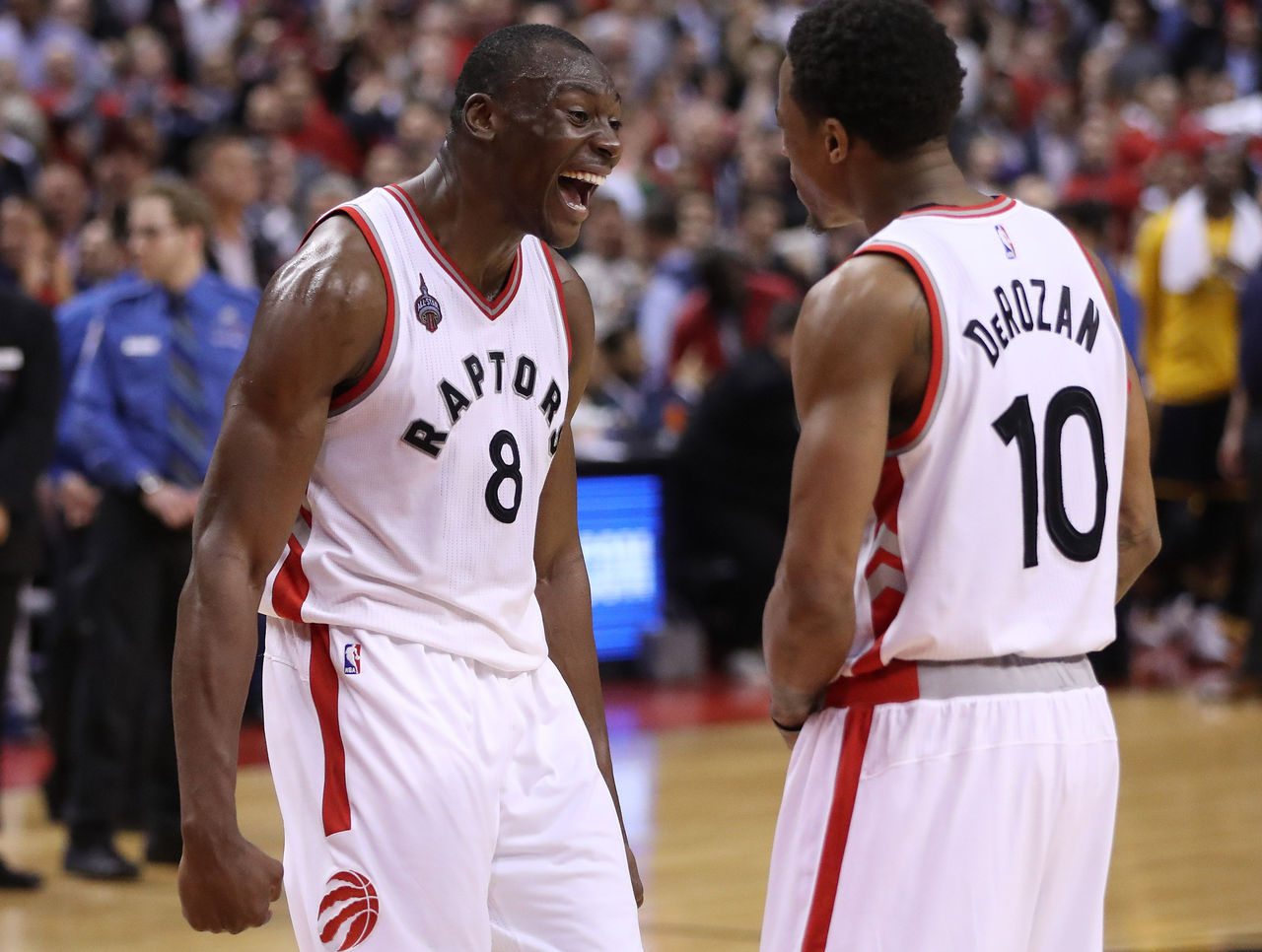How the Raptors and Heat will adapt without their centers
Kyle Lowry said it best when asked how injuries to Hassan Whiteside and Jonas Valanciunas will change the outlook of the series.
"It's gonna be small ball," Lowry said flatly.
That's the obvious fallout from a series suddenly devoid of its respective starting centers. Valanciunas will miss the entire second round with an ankle sprain, while Whiteside is day to day with an MCL sprain.
There's going to be plenty of small ball - it's just a question of how much. Here's how each team will adapt without their pivots:
Miami Heat
Whiteside's injury is a bigger hit for the Heat because they lack depth. The absence of Chris Bosh left Whiteside as their only credible rim protector, and now they're both out.
Erik Spoelstra shuffled through his tattered collection of bigs in Game 3 and found nothing that worked. Josh McRoberts, Udonis Haslem, and Amar'e Stoudemire combined for 12 points in 39 minutes and provided very little by way of defense.
The Raptors shot 11-of-12 in the restricted area after Whiteside checked out of Saturday's contest. Expect more of the same with Toronto's attack-minded guards laying siege to Miami's weakened interior.

(Source: NBA Stats)
Miami's best defensive alignment will likely feature Haslem at center, and that's who Spoelstra played the most in Whiteside's absence. The 35-year-old veteran will likely draw the start in Game 4.
If he can't hold up on defense, though, Spoelstra could get bold with a lineup without any bigs. Such a lineup could feature Luol Deng or Justise Winslow at center in an all-out small-ball look.
The Heat haven't played any meaningful minutes without at least one big on the floor during the regular season (they had no reason to), but they might need it just to boost their offense. Through three games, Miami's offensive rating sits at 97.1 - a mark that would've ranked second-worst in the regular season.
Deploying five wings at once would allow the Heat to play faster and space the floor better. Miami's small-ball units have been lethal all year, and if they can drag the Raptors into a perimeter-oriented game, the Heat would hold the upper hand.
Granted, the defense would suffer. Miami doesn't generate enough turnovers and their wings are old (Deng, Dwyane Wade, Joe Johnson, and Goran Dragic are all at least 30 years old), so they might lack the stamina to defend. But in lieu of better options, a hyper-small lineup in limited doses could give Miami a boost.
Toronto Raptors

Unlike the Heat, the Raptors have plenty of options remaining in the frontcourt.
Bismack Biyombo will almost certainly start at center. He struggled in Games 1-3, but he was a reliable option in Round 1 and profiles as an excellent defender and a dogged rebounder.
During the regular season, the Raptors were hesitant to crash the glass. But if Miami downsizes even more, Biyombo should wreck havoc on the interior to create second-chance opportunities. The big man grabbed offensive rebounds at a top-10 rate this season.
However, Biyombo's a complete liability on offense, and with the Raptors' backcourt struggling to replicate their All-Star form, Dwane Casey may have to get creative in order to spark their offense after losing their dominant low-post scorer in Valanciunas.
Deploying a lineup with Patrick Patterson at center could open up the floor. He played most of the fourth quarter as the lone big on the court in Game 3 and was a plus-13 in 35 minutes. He's a strong (if streaky) 3-point shooter who moves the ball well.
Beyond that, the Raptors might need some additional spot duty from the likes of James Johnson, Luis Scola, or Lucas Nogueira. Scola was an abject disaster in Game 3 (the Raptors were outscored 13-1 in his five minutes on the court), but his experience might earn him the nod over players with higher upside in Johnson and Nogueira.